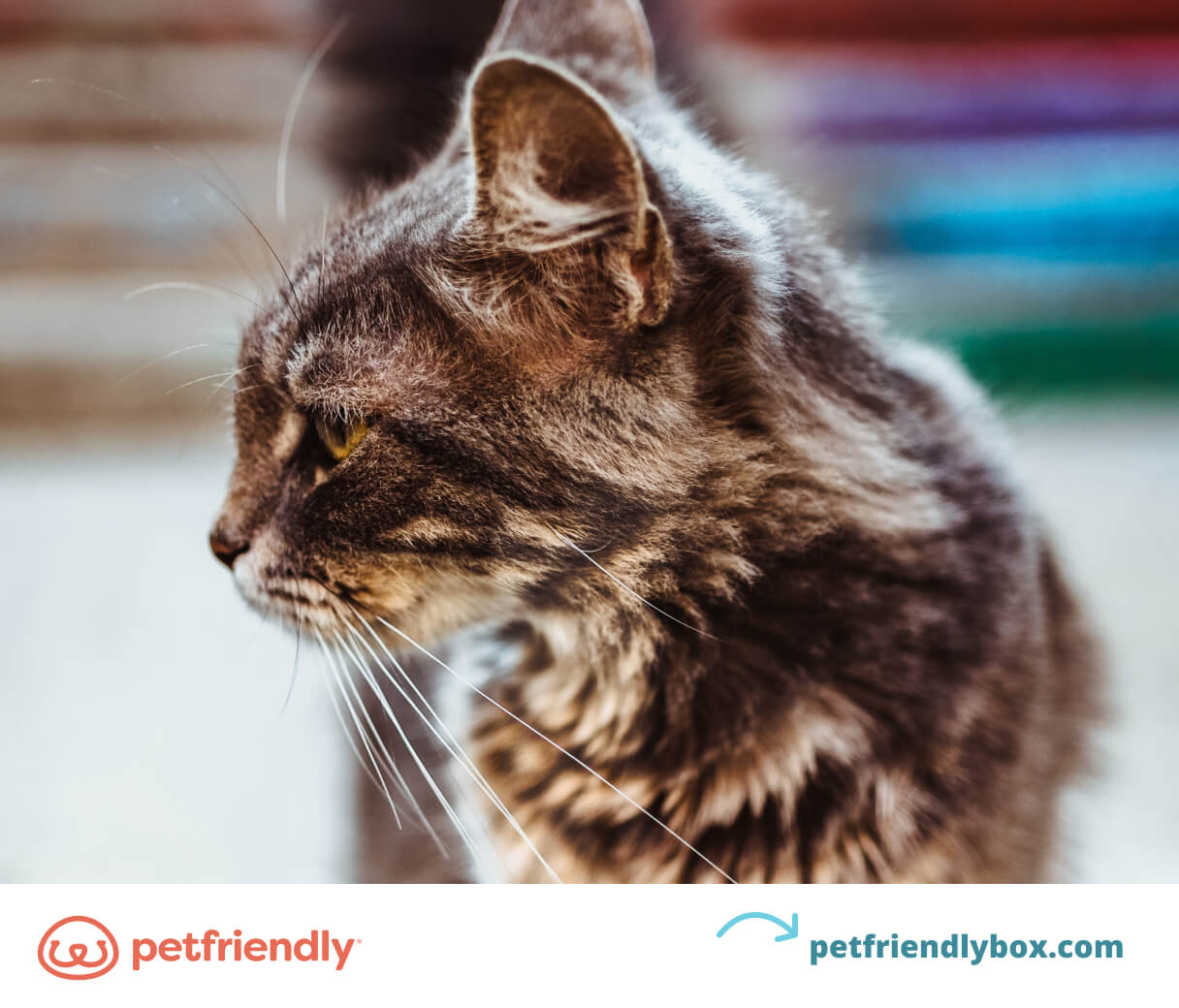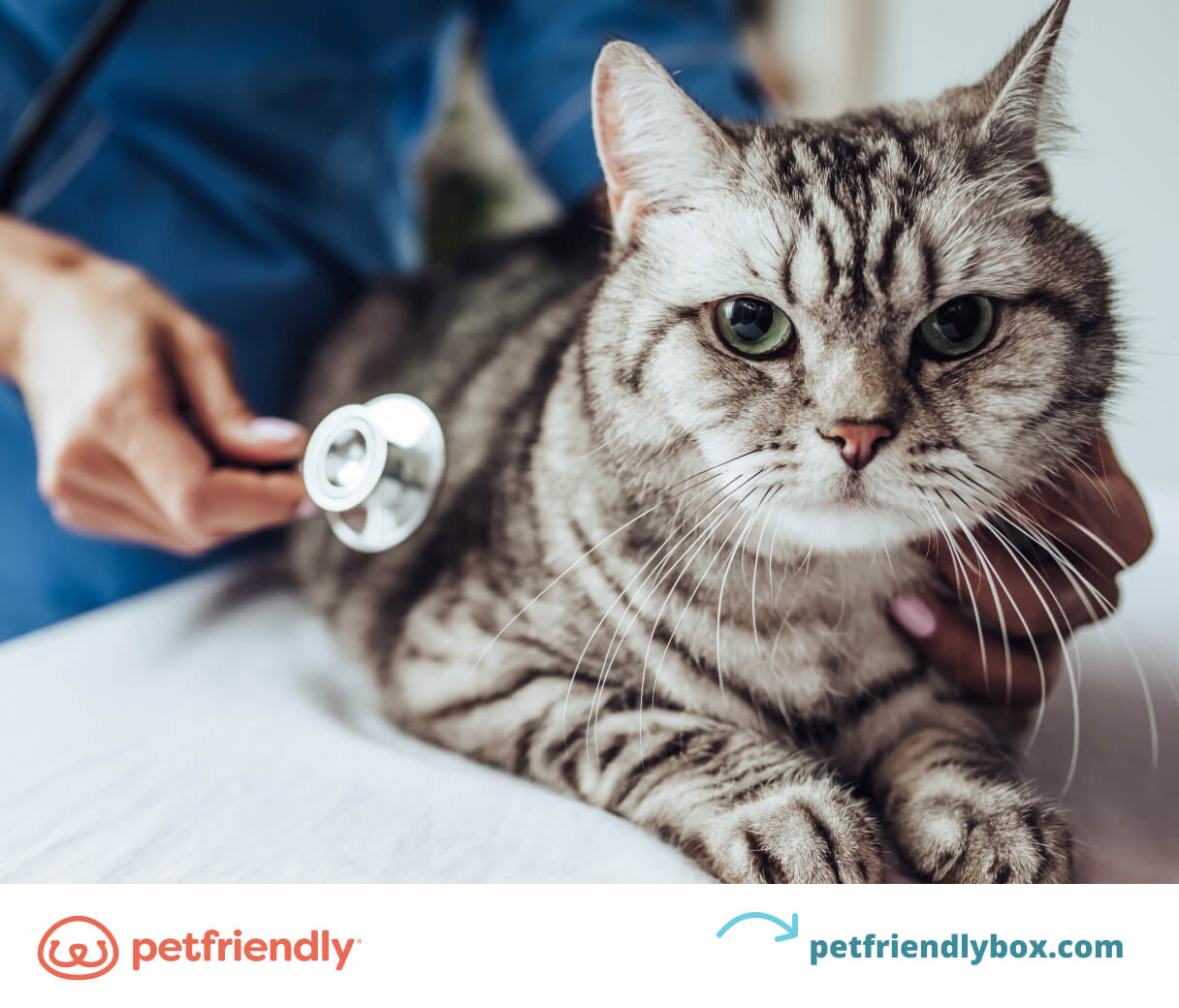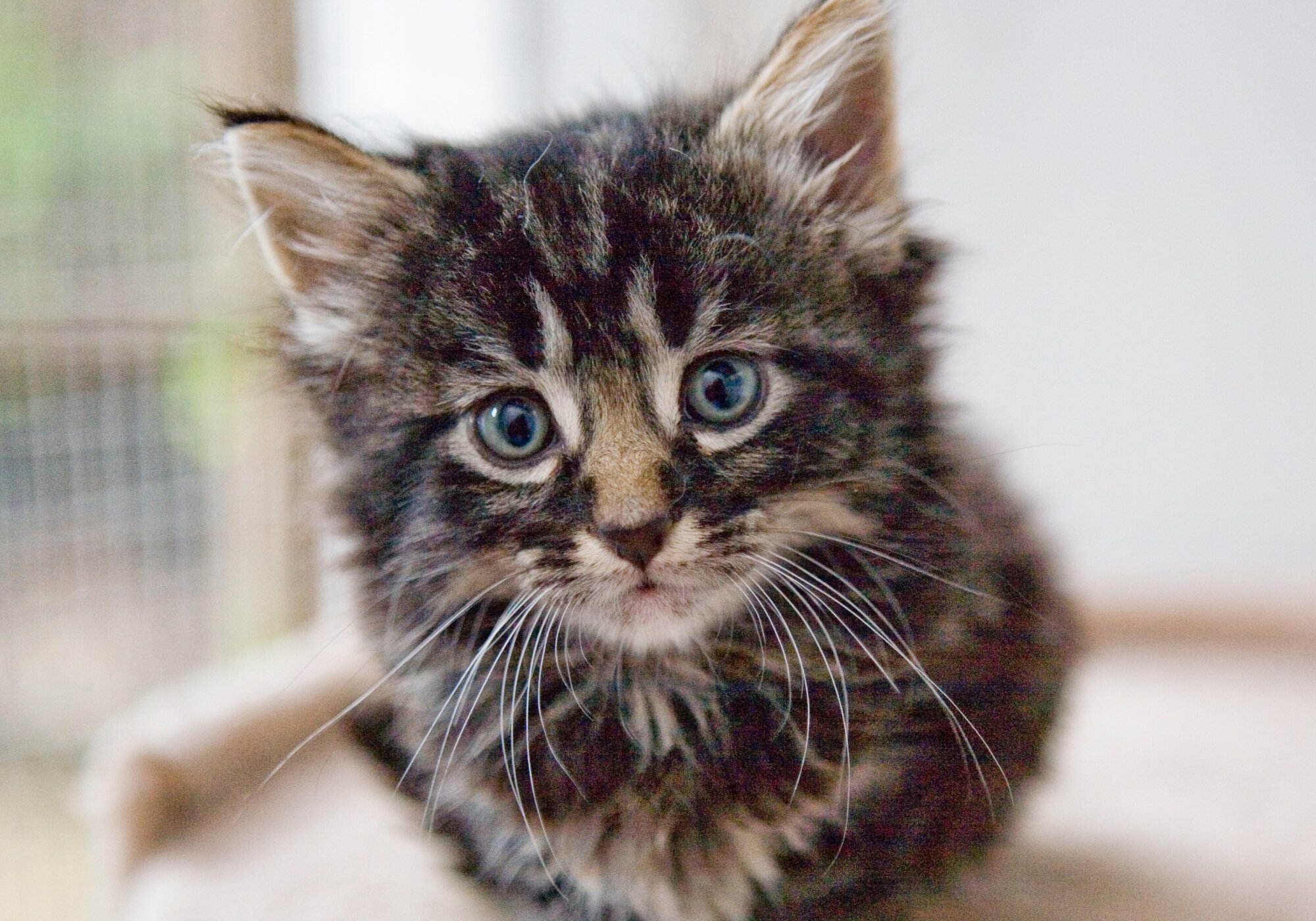Adding a new cat to your family is an exciting milestone. But, there are some important things first-time cat owners should know before they introduce their feline friend to a new home.
In this guide, we'll share how to be a good cat owner with 10 essential tips for new cat owners. Plus, a new cat checklist to help you gather everything you need for your new cat's life.
How to be a good cat owner

There's no foolproof way to be a perfect, first-time cat owner. But, there are plenty of ways you can prepare for your new pet that will help you along the way.
Bonding with your new cat requires patience and care. Taking care of a new pet can be overwhelming. So, stay positive and persistent, and talk to your vet if you need help or advice.
10 tips for first-time cat owners
Raising your first cat or kitten is one of the greatest joys of being a pet parent. Before you bring your new cat home, check out these 10 tips for welcoming a new cat to your space.
1. Learn about your new cat.

Every cat is unique. It’s important to learn as much as possible about your new cat in order to cater to their needs.
Different qualities of your cat may determine how they behave. When you pick up your new cat, talk to the shelter, breeder, or seller about:
- Your cat’s breed
- Pre-existing health concerns
- Behavior with other cats
- History of trauma or neglect
Many cats adopted from shelters have unique behaviors based on past experiences. Write down any known health conditions and dietary needs. This information will be important to tell your veterinarian at your cat’s first check-up.
2. Visit your vet for a check-up.

After bringing your cat home, find a vet to visit for a cat check-up. If you are a first-time cat owner, ask for recommendations from trusted friends and family members.
Additionally, consider these questions to find the right vet for your preferences:
- Do you prefer to prevent issues before they start?
- Are you looking for more natural or holistic solutions?
- Do you plan to order medicine or food from the vet or search on your own?
- Can you give your cat a pill on your own?
At your cat’s check-up, your vet will make sure your pet has all the vaccinations they need to live a healthy life. If your shelter, breeder, or seller shared any known cat health problems with you, pass those along to your vet.
Your vet may also find other health conditions or dietary needs for your cat. Take note of each and work with your vet to create a wellness plan.
Visiting your vet every year for an annual check-up is key to ensuring your cat is healthy and has the tools they need to thrive in their new home.
3. Feed your cat a healthy diet.

If your vet recommended a specific cat food at your cat’s check-up, follow their guidance. Cats with food allergies and certain health conditions need special food.
If you adopted an older cat, consider feeding them soft, canned food instead of dry food. Older cats are more prone to dental problems, so wet food is often easier for them to eat.
When starting your cat on a new diet, transition slowly. Mix a small amount of your cat’s new food with their old food to start.
As they get used to their new food, slowly add more new food and less of their old food for meals. After a few days, only feed your cat their new food.
PRO TIP:
Exposure to a new environment can be overwhelming for many cats. If your cat refuses their food at first, don't worry. Your cat will acclimate to their new home on their own time.
4. Choose the right food dishes and water bowl.

Your cat's food and water bowls should be in a low-traffic area in your home. Loud noise, other pets, and a stimulating environment can deter your kitty from eating their food.
If your new cat is elderly and has arthritis, consider using raised bowls for cat food and water. Raised bowls help your feline eat comfortably, without bending down.
Like some dog breeds, some cats eat quickly. Slow-feeder food bowls can help slow down your kitty to avoid digestive problems from eating too fast.
5. Kitten-proof your home.

Kittens are curious and can get themselves into trouble if you don’t kitten-proof your home. To cat-proof your house, remember to:
- Hide electrical cords and breakable items
- Secure your furniture
- Close toilet lids
- Put human food away
- Block access to any appliances
- Create a designated "cat-zone"
What is a “cat zone”
A cat space or zone is a designated space just for your kitty. They can help your cat adjust and feel secure in their new home. And, they give your newly adopted cat a safe room to retreat when stressed or overwhelmed.
Your cat's room should have comforting supplies like a soft blanket, a scratching post, and any other toys your cat likes. Your cat's room should keep your cat calm and happy.
Consider a baby monitor or camera to keep an eye on your new kitty if you need to leave them at home. Your new friend will also need essential day-to-day supplies to keep them comfortable.
Here are a few things to include:
Cat bed
Kittens can sleep anywhere from 16-18 hours a day. So, be sure they have a cozy bed in a quiet room to rest. When choosing a bed, consider the size, materials, and design. If you have a large cat breed, be sure their bed is large enough for them to sleep comfortably.
Litter box and accessories
Litter boxes are essential for your cat's hygiene and well-being. Plus, they keep your house clean and free of smells.
If you have more than one kitty, make sure you have one litter box for each. Some cats prefer covered boxes, while others prefer uncovered.
To keep their area clean and avoid spills, your litter box should:
- Have low walls for easy entry
- Have a litter tray or mat underneath
- Be about an inch and a half full of cat litter
- Include a scooper for litter box cleaning and maintenance
6. Keep up on cat grooming.

Grooming and hygiene are important parts of pet parenting. If you don't have the right tools at home, you can visit a professional groomer to keep your cat's claws, teeth, and hair healthy.
Trim their claws
Regular trims keep your cat's claws from getting too long. Overgrown nails can cause paw problems for your cat. Trimmed nails not only save your cat's paws, but also your furniture, carpets, and skin from scratches.
Brush their teeth
Cats have little mouths and teeth, so they need a special-sized brush. We recommend using a finger brush with a pea-sized amount of cat toothpaste.
Never use human toothpaste to brush your cat's teeth. Certain ingredients in human toothpaste like xylitol are toxic to cats.
It can be helpful to use teeth brushing sessions as training times. Have treats on-hand to reward them after brushing, and give lots of pets and positive reinforcement along the way.

Bathe them occasionally
The stereotypes are true — most cats don't enjoy taking baths or getting wet. But, you can gently wet your cat's fur without getting water on their face.
To bathe your kitty, pour a small amount of pet shampoo onto their fur and rub it into their skin until it lathers. Be sure to rinse all of the shampoo out of their fur to avoid skin irritation.
Brush their hair
Long-haired cats need regular brushing to prevent mats and tangles. Cats with long hair may also need more frequent baths. Cat owners can use a metal or rubber brush for their cat's fur.
Short-haired and hairless cats are low maintenance when it comes to bathing and brushing. But, they may need extra skincare and protection from the sun.
If you have a hairless breed, consider getting them a cooling vest to cover their skin in the summer heat. You can also use a pet sunblock to keep their skin safe from too much sun exposure.
Clean their ears
Cats can be prone to ear mites and ear infections if you don't keep up on regular ear cleanings. Use a gendle ear wipe to clean the inside of your cat's ears daily.

7. Provide lots of playtime.

Playtime is a great way to bond with your new friend. Plus, playing helps cats exert pent-up energy and satisfy their instincts to help them fall asleep.
For the ultimate playtime experience, consider having these items:
- Cat toys: Toys help with enrichment and stimulate your cat's brain. Having toys around to play with your cat is not only fun, but it also helps keep most cats out of trouble.
- Cat tree: Cats enjoy having a place to climb and perch atop. Cat towers and trees are great places for cats to climb and play, but also to rest. Your cat's tree should be taller than your tallest piece of furniture.
- Scratching post: Alternatively, if your kitty loves to scratch, consider having a scratching post, or a few of them, in your home. Scratching posts give them a place to scratch instead of your furniture or carpet.
8. Spend time training your new cat.

Training is an important part of being a cat owner. Plus, it’s fun to spend time teaching your cat tricks. Training helps your cat understand their new home.
You can train your feline friend to:
- Use their litter box
- Recognize their name
- Sit, come, and stay
Spending time with your cat during training sessions can also help socialize your kitty. The more your cat understands how to play the right way, the more they will get along with other pets.
PRO TIP: REWARD WITH HIGH-VALUE TREATS
Protein-based treats can help speed up development as kittens grow into adults. All-natural cat treats are another great option for your feline friend. New cat owners can find nutritional treats at pet supply stores or through online retailers.

9. Be proactive about your pet’s health.

Cat care doesn't end with food, toys, and supplies. New cat owners should proactively care for their pet, as there are plenty of other health conditions that can affect them.
Two common health risks for cats are cat-scratch disease and flea infestations. But these are easily avoided with year-round protection from cat fleas and ticks.
Even if your new kitty is an indoor cat, they still need flea and tick protection. You may be wondering if your cat needs flea and tick treatment in the colder months. The answer is yes. When the weather gets cold, fleas and ticks can come inside your house and live there for up to a year.
If you have a dog or other pets in your home, protect your entire pack with monthly topical flea and tick prevention.
You can also supplement your cat with multivitamins to keep them healthy. Anxious cats especially can benefit from calming treats and catnip.
10. Make a safety plan.

Having a safety plan for your new pet is important, especially for new cat owners. To keep your new cat safe and healthy, cat owners should:
- Get rid of poisonous plants
- Have pet insurance
- Travel safely with their cat
Poisonous plants
Make sure you don't have any plants that are poisonous to cats in your home or yard. Poisonous plants can be dangerous to your cat's health and cause serious symptoms and conditions.
Some plants toxic to cats include:
- Aloe vera
- Autumn crocus
- Azaleas
- Cyclamen
- Daffodils
- Lilies
- Pothos
- Snake plants
- Tulips
Pet insurance
Being a good pet parent means staying ahead of problems before they arise. Pet insurance is an easy way for new cat owners to proactively protect their pet.
Insurance can save you money out-of-pocket when health issues occur. From injuries to illness, you never know when your cat may need an emergency check-up.
Traveling with your cat
While on the go, keep your cat in a cat carrier. The carrier should have plenty of room for your cat to stand up, turn around, and lie down.
If you are going on vacation, consider asking a trusted family member to take care of your cat while you're away. Introduce your cat to the family member and the space they'll be staying in ahead of time.
New cat checklist
You may be wondering, "What supplies do cat owners need?" Here are some essential items a new cat owner needs to give their cat a healthy and happy life:
Learn about your new cat
- Take notes about your cat’s breed, health, and age
- Ask the shelter, breeder, or seller for information about your cat
- If unknown, try an at-home cat DNA test
Find a veterinarian
- Decide on your wants and needs
- Do your research ahead of time
- Ask friends and family for recommendations
Check on their health
- Ensure their vaccinations are up-to-date
- Schedule annual cat check-ups
- Determine the right dietary plan
Prepare your home
- Hide electrical cords and breakables
- Secure furniture and valuables
- Put away human food
- Get rid of poisonous plants
- Secure pathways to appliances
Create a dedicated "cat zone"
- Clean floors and remove clutter
- Place a litter mat under your litter box
- Provide a cat tree and scratching post
- Give your cat a cozy bed
Choose the right grooming routine
- Trim their nails regularly
- Brush their teeth
- Give baths occasionally
- Brush their hair
- Clean their ears
Start training your cat
- House training
- Potty training
- Name recognition
- General commands
- Socialize
- Use healthy cat treats
Protect your pet
- Use monthly topical flea and tick prevention
- Research supplements
- Buy pet insurance
- Make travel arrangements
- Secure a trusted family member
Stock up on supplies
- Nutritious, high-quality food
- Training treats
- Food bowls
- Water bowls
- Food storage
- Cat carrier
- Scratching post
- Bed, blankets, towels
- Toys
- Wand toy
- Litter box
- Litter mat
- Toothbrush and toothpaste
- Grooming tools (nail trimmers)
- Pet shampoo
- Collar & ID tags
- Baby monitor or camera
- Enzyme cleaner for accidents


